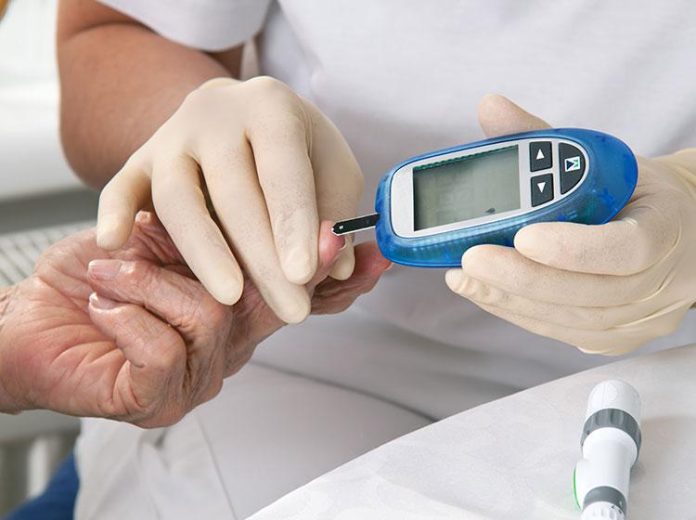Diabetes is a medical condition which is characterized by high blood sugar levels. It is classified into Type 1, Type 2 and gestational diabetes. It can be managed through lifestyle changes and medication. Regular monitoring is important to prevent complications and maintain overall health.
While Type 1 Diabetes symptoms often arise suddenly and serve as the primary reason for checking blood sugar levels. In contrast, symptoms of other types of diabetes and prediabetes tend to develop gradually or may not be easily noticeable.
Types of Diabetes:
- Type 1
- Type 2
- Gestational Diabetes
Factors contributing to High Sugar Levels:
Many factors can affect blood sugar levels which are mentioned below:
- Diet
- Lack of physical activity
- Medications
- Stress
- Illness of Infection
- Hormonal changes
- Insufficient sleep
Need for Diabetic Screening:
It is recommended that the following individuals experiencing symptoms undergo diabetes screening:
- Individuals with a body mass index (BMI) higher than 25, regardless of age, who possess additional risk factors such as high blood pressure, abnormal cholesterol levels, an inactive lifestyle, a history of polycystic ovary syndrome or heart disease or having a close relative with diabetes.
- Individuals above the age of 35 are advised to undergo an initial blood sugar screening. If the results are normal, they should be screened every three years thereafter.
- Women who have experienced gestational diabetes should be screened for diabetes every three years.
- Individuals diagnosed with prediabetes should be tested annually.
- Individuals with HIV are advised to be tested for diabetes.
Diabetes Tests:
If you wonder that what is the normal sugar level and feel the need to get yourself tested for diabetes, the following tests are available:
- A1C test: This blood test, also known as a glycated hemoglobin test, measures the average blood sugar level over the past 2 to 3 months. It does not require fasting and provides a percentage indicating the amount of blood sugar attached to hemoglobin. An A1C level of 6.5% or higher on two separate tests indicates diabetes, while a level between 5.7% and 6.4% suggests prediabetes. A level below 5.7% is considered normal.
- Random blood sugar test: This test involves taking a blood sample at any given time. A blood sugar level of 200 milligrams per deciliter (mg/dL) or higher indicates diabetes, regardless of the time since the last meal.
- Fasting blood sugar test: This test requires a blood sample after an overnight fast. A fasting blood sugar level below 100 mg/dL (5.6 mmol/L) is considered normal, while a level between 100 and 125 mg/dL (5.6 to 6.9 mmol/L) indicates prediabetes. A level of 126 mg/dL (7 mmol/L) or higher on two separate tests confirms diabetes.
- Glucose tolerance test: In this test, an overnight fast is followed by a measurement of the fasting blood sugar level. Then, a sugary liquid is consumed, and blood sugar levels are monitored regularly for the next two hours. A blood sugar level below 140 mg/dL (7.8 mmol/L) is considered normal, a reading above 200 mg/dL (11.1 mmol/L) after two hours suggests diabetes, and a level between 140 and 199 mg/dL (7.8 and 11.0 mmol/L) indicates prediabetes.
Treatments for Diabetes:
The treatment plan includes:
- Blood sugar monitoring- Blood sugar monitoring plays a crucial role in diabetes management. Depending on the treatment plan, blood sugar checks may be required multiple times a day, particularly for individuals using insulin. Continuous glucose monitors can be used to track blood sugar levels without frequent fingersticks, offering valuable information about trends in blood sugar levels.
- Insulin injections or use of an insulin pump- Insulin therapy is essential for individuals with type 1 diabetes to manage blood sugar levels and sustain life. It may also be necessary for some people with type 2 diabetes or gestational diabetes. Insulin is available in various types, including short-acting, rapid-acting, long-acting, and intermediate options. Insulin is typically administered through injections using a fine needle and syringe or an insulin pen. Insulin pumps, tubeless pumps, and closed loop systems are alternative delivery methods that provide precise insulin dosages based on individual needs.
- Carbohydrate counting- Carbohydrate counting involves keeping track of carbohydrates consumed in meals and adjusting insulin doses accordingly. With Understanding of the carbohydrate content of foods, individuals can make informed choices to maintain glycemic control.
- Oral diabetes drugs- In addition to insulin, oral or injected drugs may be prescribed for certain individuals with diabetes. These drugs can help the pancreas release more insulin, reduce glucose production by the liver, slow carbohydrate absorption, or increase insulin sensitivity. Metformin is commonly prescribed as the initial medication for type 2 diabetes.
- Adopting a healthy diet- A healthy eating plan for diabetes focuses on consuming more fruits, vegetables, lean proteins, and whole grains, while reducing saturated fats, refined carbohydrates, and sweets.
- Maintaining a healthy weight- Maintaining a healthy weight is important for managing diabetes as it can improve blood sugar control, reduce insulin resistance and lower the risk of complications. A well-balanced diet that includes fruits, vegetables, lean proteins and whole grains should be consumed.
- Regular physical activity – Regular aerobic exercise is recommended for individuals with diabetes as it helps lower blood sugar levels by facilitating the movement of sugar into cells for energy. Physical activity also increases insulin sensitivity, reducing the amount of insulin required to transport sugar into cells. Engaging in at least 30 minutes of moderate physical activity most days of the week or aiming for 150 minutes per week is advised. Breaking up long periods of sitting is also important, and individuals should avoid prolonged sedentary behavior.
- Transplantation: In specific cases, transplantation may be considered as a treatment option. Pancreas transplants or islet cell transplants can be performed for individuals with type 1 diabetes, eliminating the need for insulin therapy. However, these procedures carry risks and require lifelong immune-suppressing drugs to prevent organ rejection.
- Bariatric surgery: Bariatric surgery such as gastric bypass, may be beneficial for some obese individuals with type 2 diabetes, leading to improvements in blood sugar levels. However, the long-term risks and benefits of bariatric surgery for type 2 diabetes are still being studied.
Gini Health is the leading center for Diabetes management which emphasizes on the role of regular blood sugar monitoring, maintaining a healthy diet, engagement in physical activity and medication for living a healthy and fulfilling life.
- Winto White Label Site’s Customization and Scalability: A Complete Guide - January 23, 2025
- Making Lottery Games Accessible: Winto’s White-Label Platform - January 23, 2025
- Best Live Casino Games – Winto - January 22, 2025


























